- 02/15/2021
- 8 Min Read
- By: Christian Schaefer
How To Replace A BMW F30 Water Pump & Thermostat (BMW N20/N26 Engine)
Bringing an engine to its standard operating temperature before leaning on it is the best way to increase its life. That is especially the case with engines under boost pressure, such as BMW's N20 and N26 engines. This generation of BMW four-cylinder saw the use of an electric water pump, rather than one driven by a belt from the crankshaft. The electric pump makes for a quicker and simpler replacement, as well as more freedom in packaging the components in the engine bay. Commonly, the electricals inside the water pumps will fail, leaving you with an overheating engine.
Along with the water pump, the other moving part in the cooling system is the thermostat. Regulating the coolant warm-up is the thermostat's job. When the engine is cold, it prevents coolant from circulating to quickly bring the engine to temperature. When the engine reaches operating temperature, the thermostat opens up and allows the coolant to circulate. A failed thermostat can either be stuck open or stuck shut, leading the engine to never warm-up or overheat quickly. Replacing the thermostat with the water pump is a smart and easy way to prevent another repair so soon.
BMW models and years applicable:
|
|
|
|
|
|
|
|
Symptoms of a failed BMW F30 electric water pump or thermostat:
- Engine fan continually running on high
- High coolant temperature error message
- Vehicle taking longer than usual to get to operating temperature
- 2E81, 2E82, or 2E85 fault code for the water pump
- Engine overheating
Ignoring the signs of a failing water pump can cause costly engine issues. Repeated overheating can cause head gasket failure and the warping of the cylinder heads, leading to costly repairs. If your vehicle is regularly overheating, don't drive it until you fix the issue.
What will it cost to replace the electric water pump and thermostat on an N20/N26 powered F30 BMW?
There are a few ways to go about completing this job. The water pump costs $285.50 on its own. You can choose to only replace the pump and skip the thermostat, though we don't recommend it. Adding the thermostat will add another $54 to the cost. You'll need to refill the coolant, and a bottle of OE BMW stuff runs $22.50.
Those three items total $362. If you follow our recommendations and replace the plastic coolant flange that is notorious for cracking and leaving owners stranded, the aluminum replacement costs $18. That brings the total parts cost to $380.
Taking the car to a dealer or independent shop will see you pay several hours for the labor and more for the parts. A professional install with their parts will easily run you close to $700.
How long will it take to replace the electric water pump and thermostat on an N20/N26 powered F30 BMW?
Thanks to the electric water pump, this job should take you too long at all. With the right tools and no distractions, a one-man operation can have this done in an hour or two.
Parts required to replace the electric water pump and thermostat on an N20/N26 powered F30 BMW:
Tools required to replace the electric water pump and thermostat on an N20/N26 powered F30 BMW:
- 6mm Socket
- 8mm Socket
- 10mm Socket
- 13mm Socket
- T30 Bit Socket
- E12 Socket
- Nut Driver Set
- Picks
- Ratchets
- Ratchet Extensions
- Hose Clamp Pliers
- Funnel
Steps required to replace the electric water pump and thermostat on an N20/N26 powered F30 BMW:
Step 1: Remove the intake airbox
Starting with the airbox, loosen the intake pipe clamp on the backside of the airbox with a flat-head screwdriver. Next, unplug the mass airflow sensor next to the clamp and unclip the hood release cable from the back of the airbox.
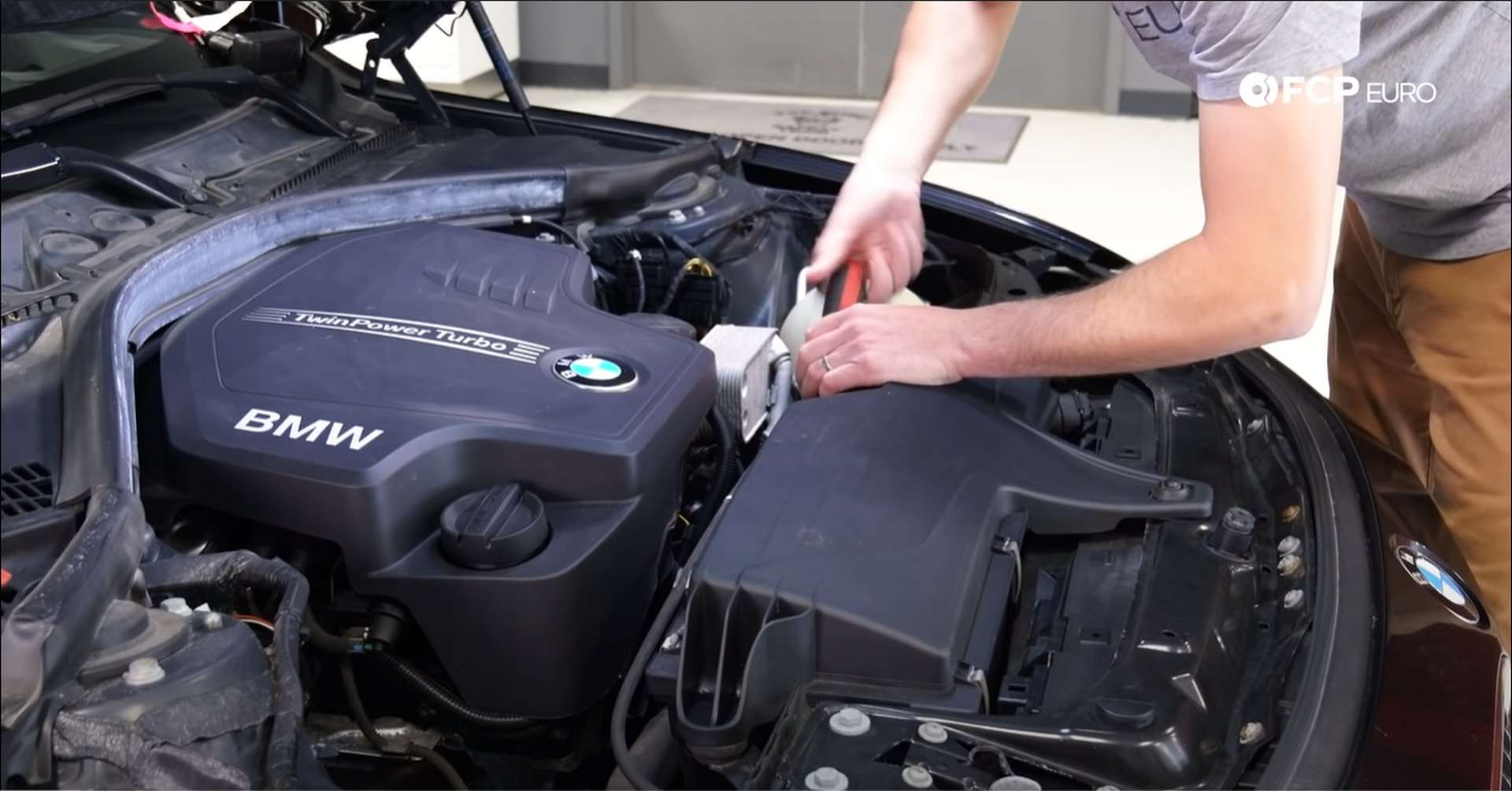
The airbox is secured to the car with three locating pins. Pull up on the pins to release them and push down on the intake pipe to separate it from the airbox. Once you release all of the pins, pull the airbox out of the engine bay.
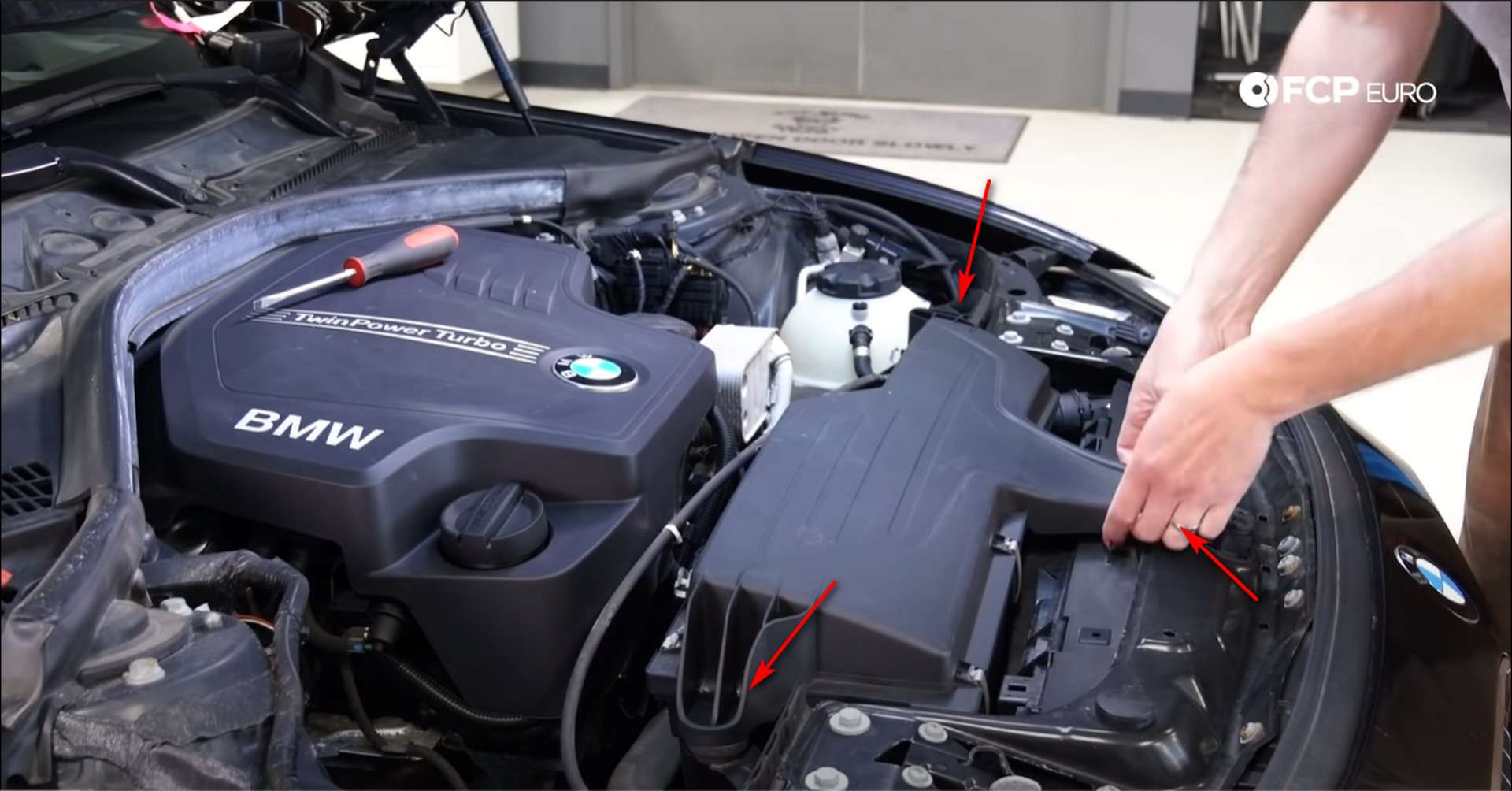
With the airbox out of the way, remove the intake tube from the turbocharger. Use an 8mm socket or nut driver to loosen the clamp securing the turbocharger's intake tube.
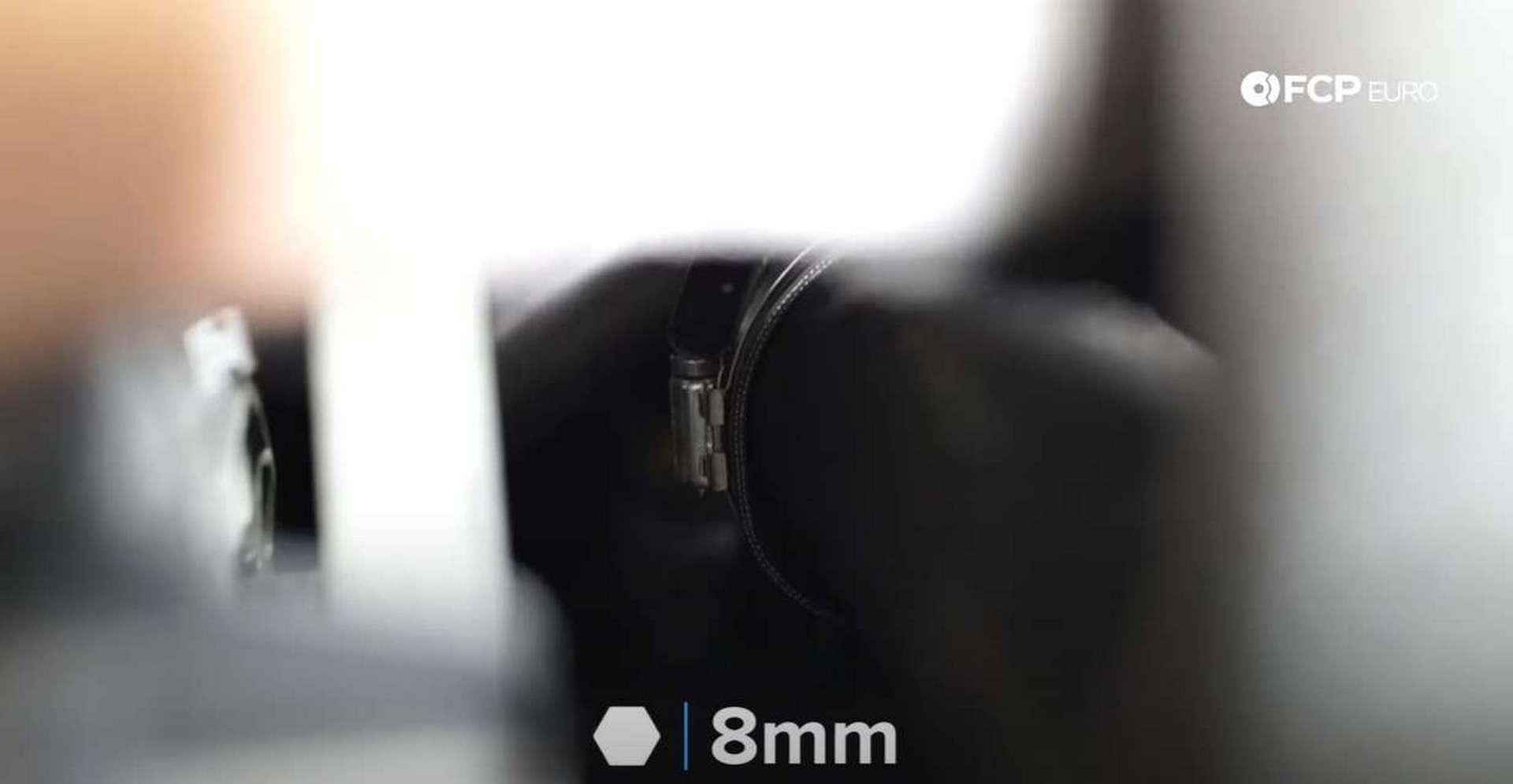
Step 2: Drain the cooling system
Jack up the front of the car and set it onto jack stands. Then, use an 8mm socket to remove all twenty of the splash shield's fasteners.
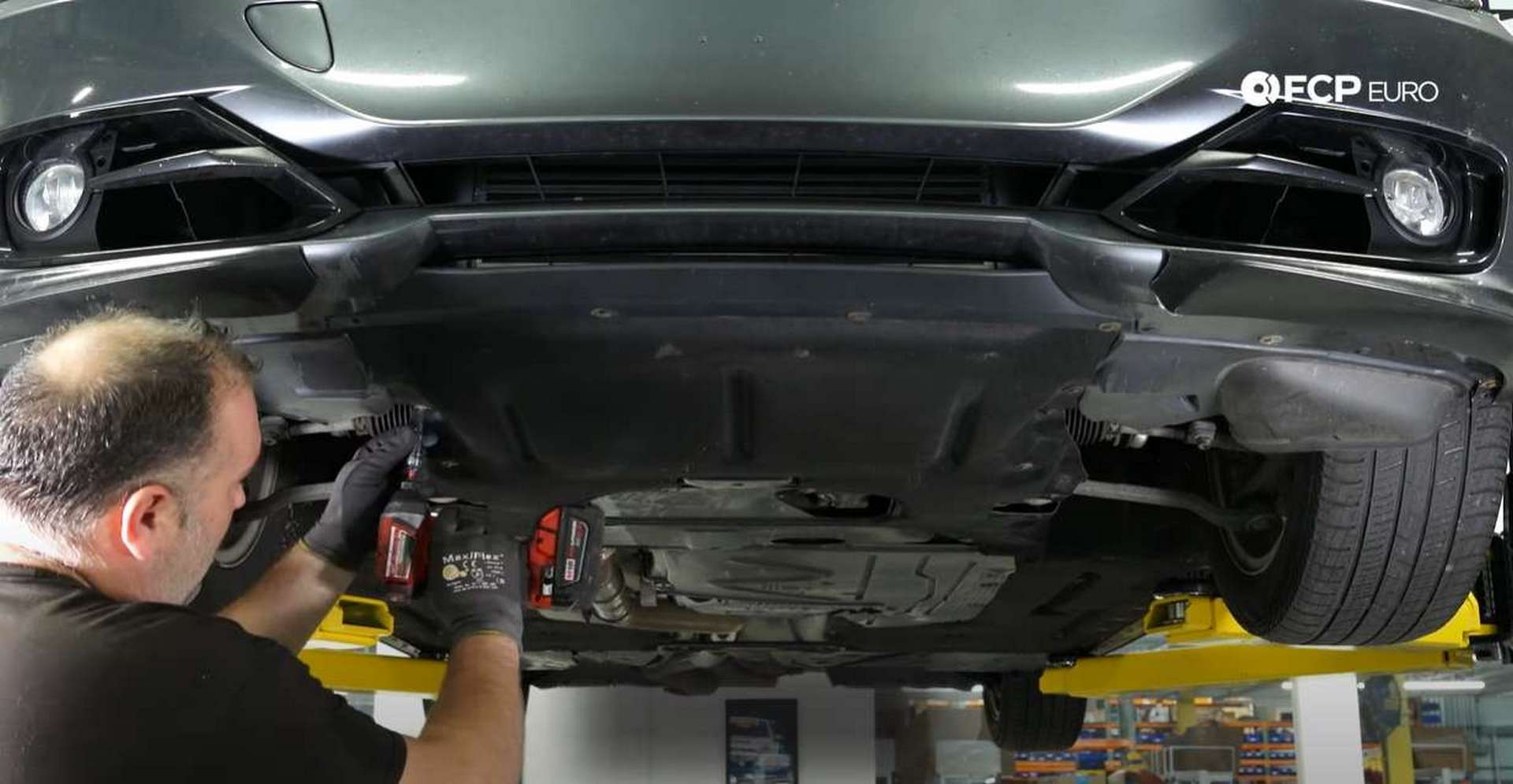
The water pump is the lowest point in the cooling system. To drain it, remove the water intake hose from the water pump. Place a drain pan under the water pump, under the car, and then use a 6mm socket to loosen the hose clamp on the water pump.
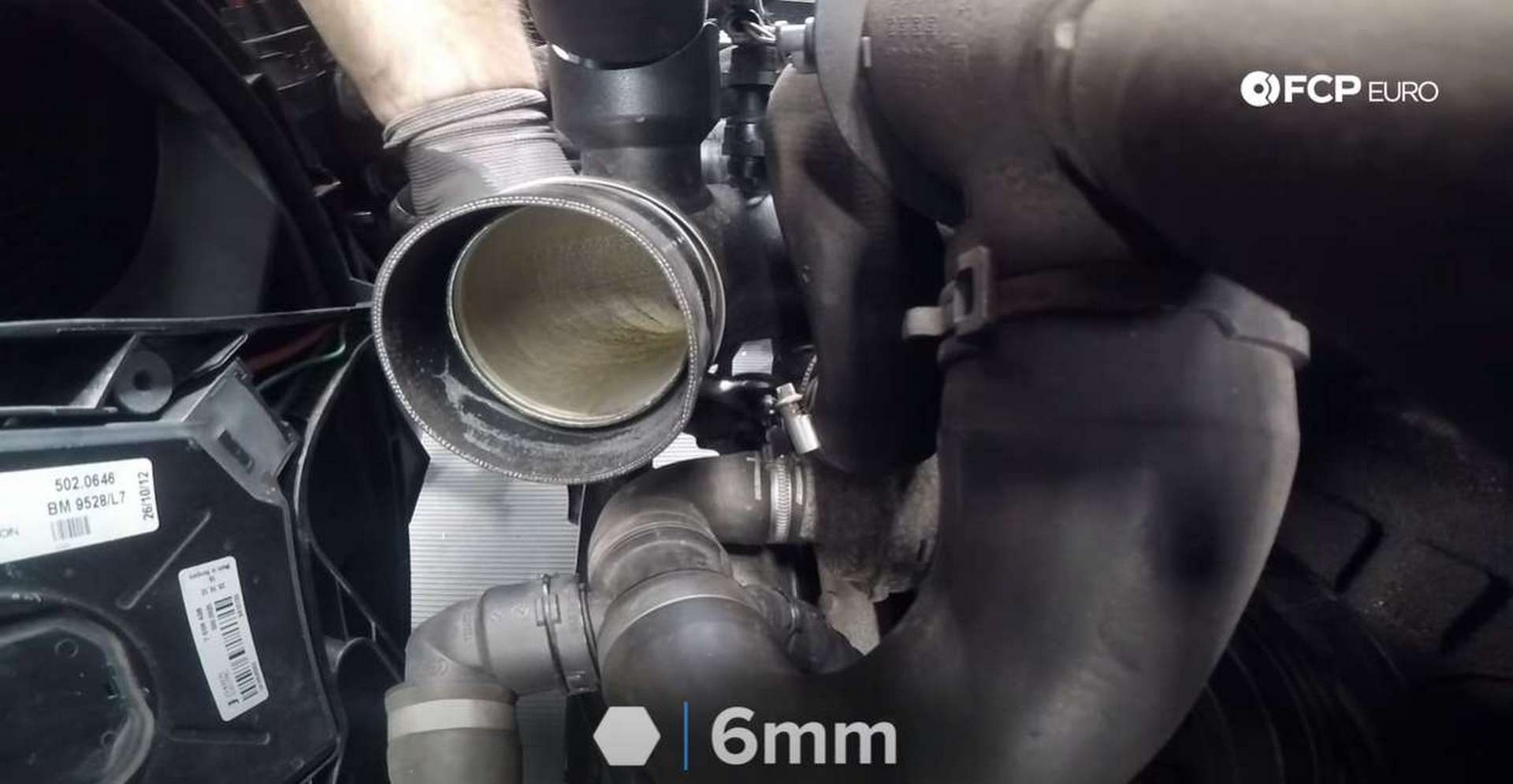
Next, open the top of the coolant expansion tank, and after that, remove the hose from the water pump.
If you are working on an xDrive model, there is an extra reinforcement plat on the subframe below the water pump. Use a 13mm socket to remove its eight fasteners and create a clearer path for the draining coolant.
Step 3: Remove the thermostat
While you're in the area, use a 6mm socket or nut driver to loosen the clamp for the water pump's other hose. Then, pull the hose off the pump; use a pick to help walk the hose off if it resists removal.
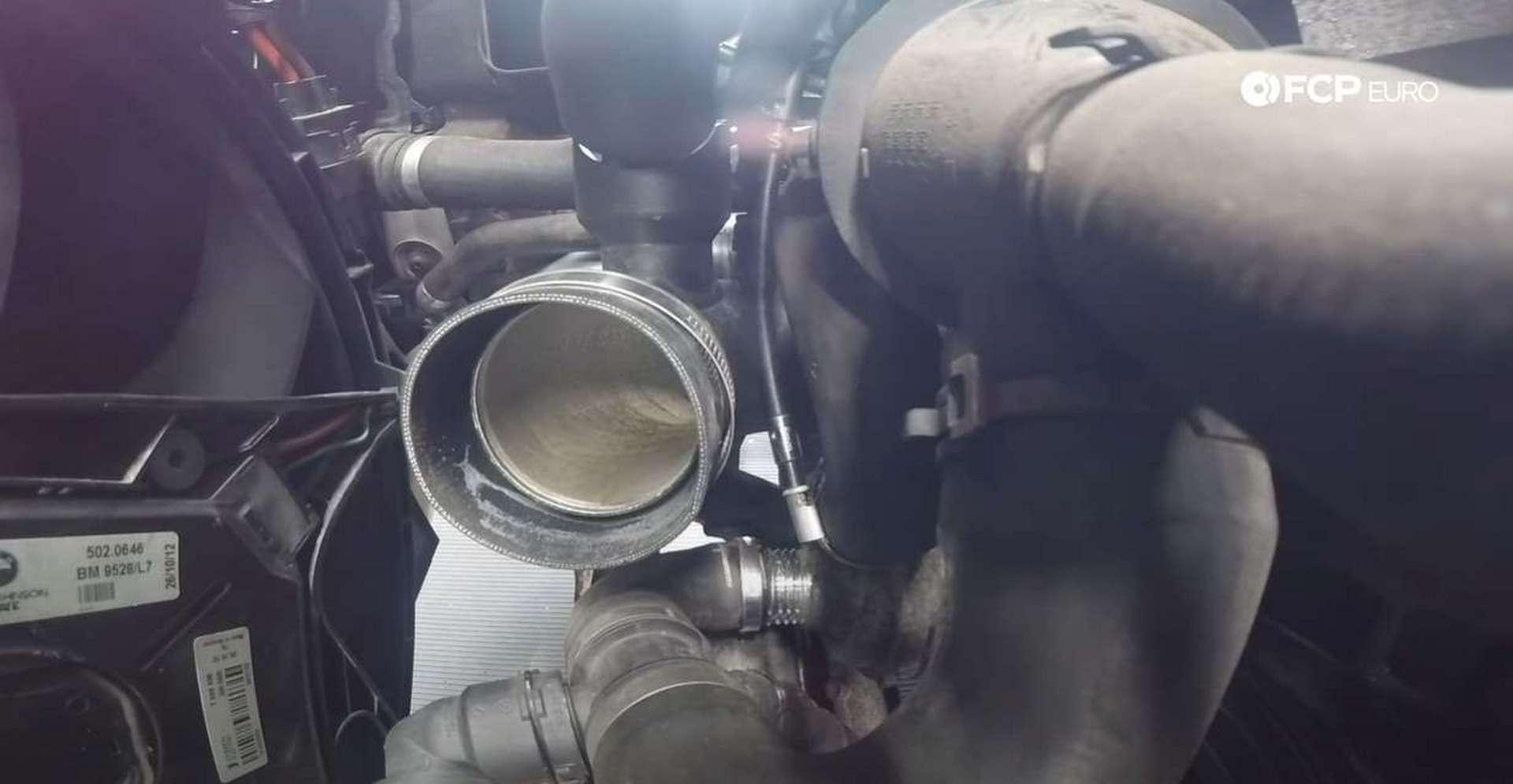
Next, disconnect the large breather hose in front of the engine cover. Push in the tabs on the sides of the hose and walk it off of the cover.
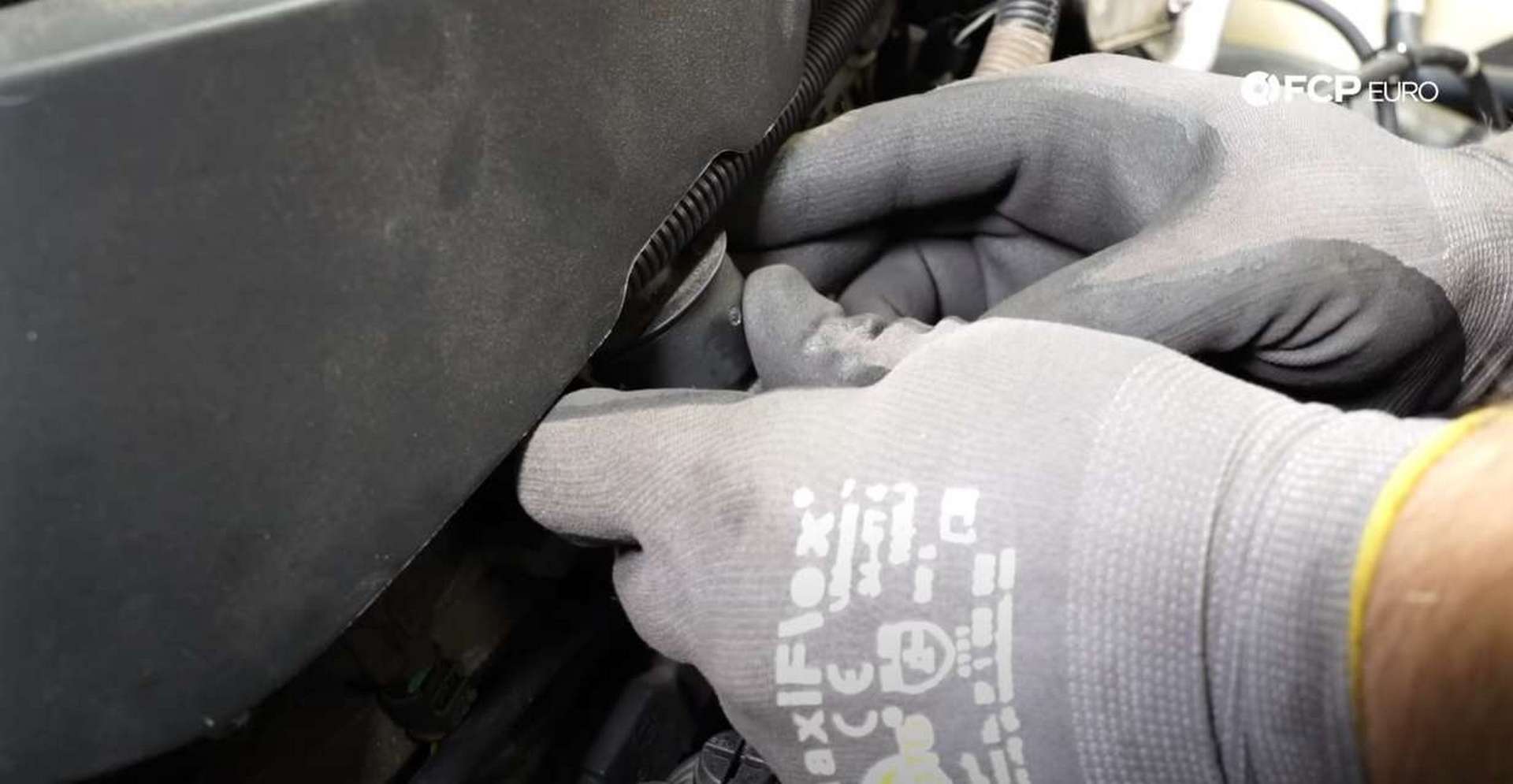
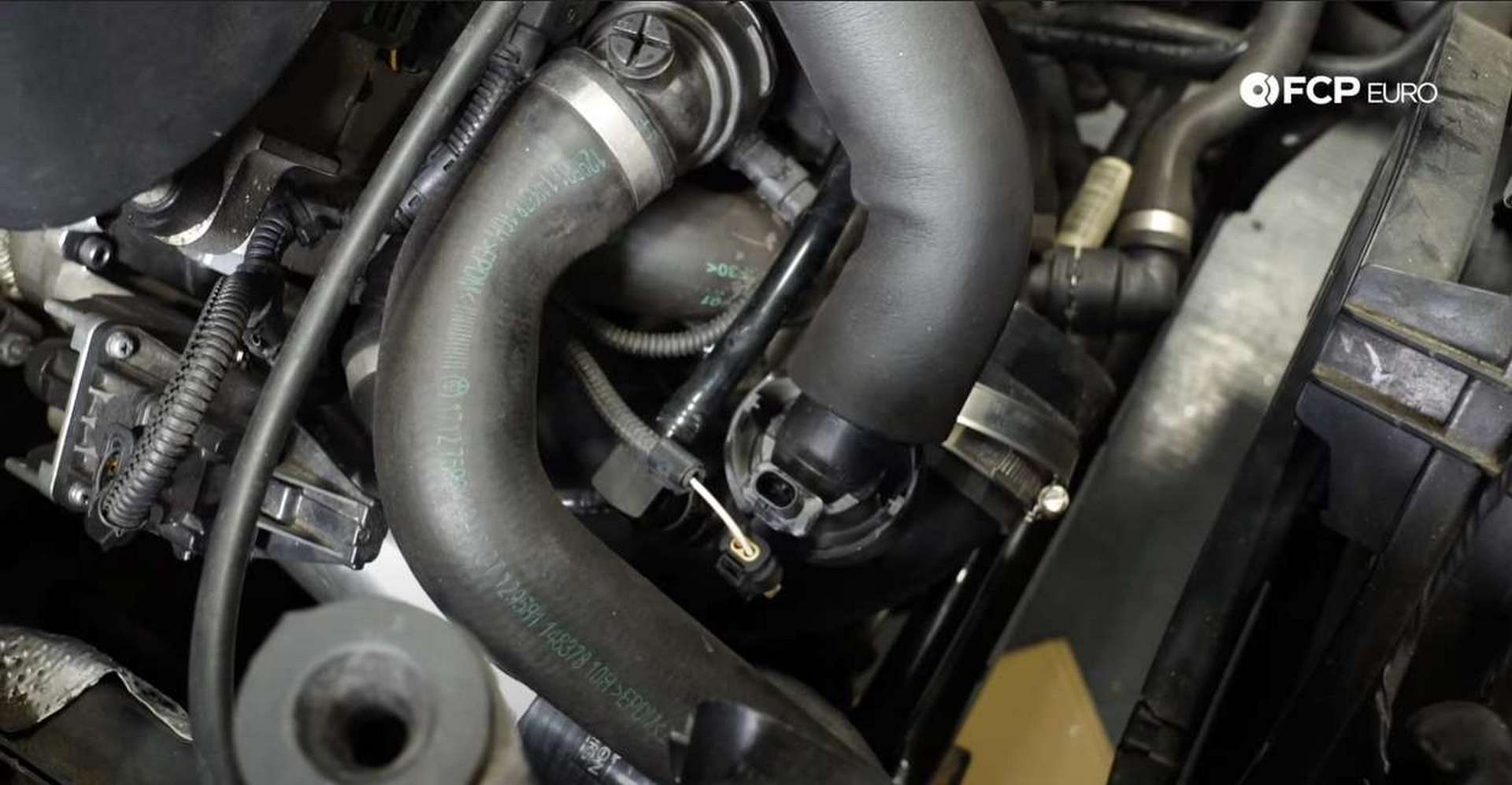
Follow the hose down and disconnect the bottom of it. First, unplug the electrical connection for the PCV system. Then, push in the tabs and pull the hose up.
Behind the hose sits the thermostat. Use a pick to pull up on the radiator side hose lock, then pull the hose off.
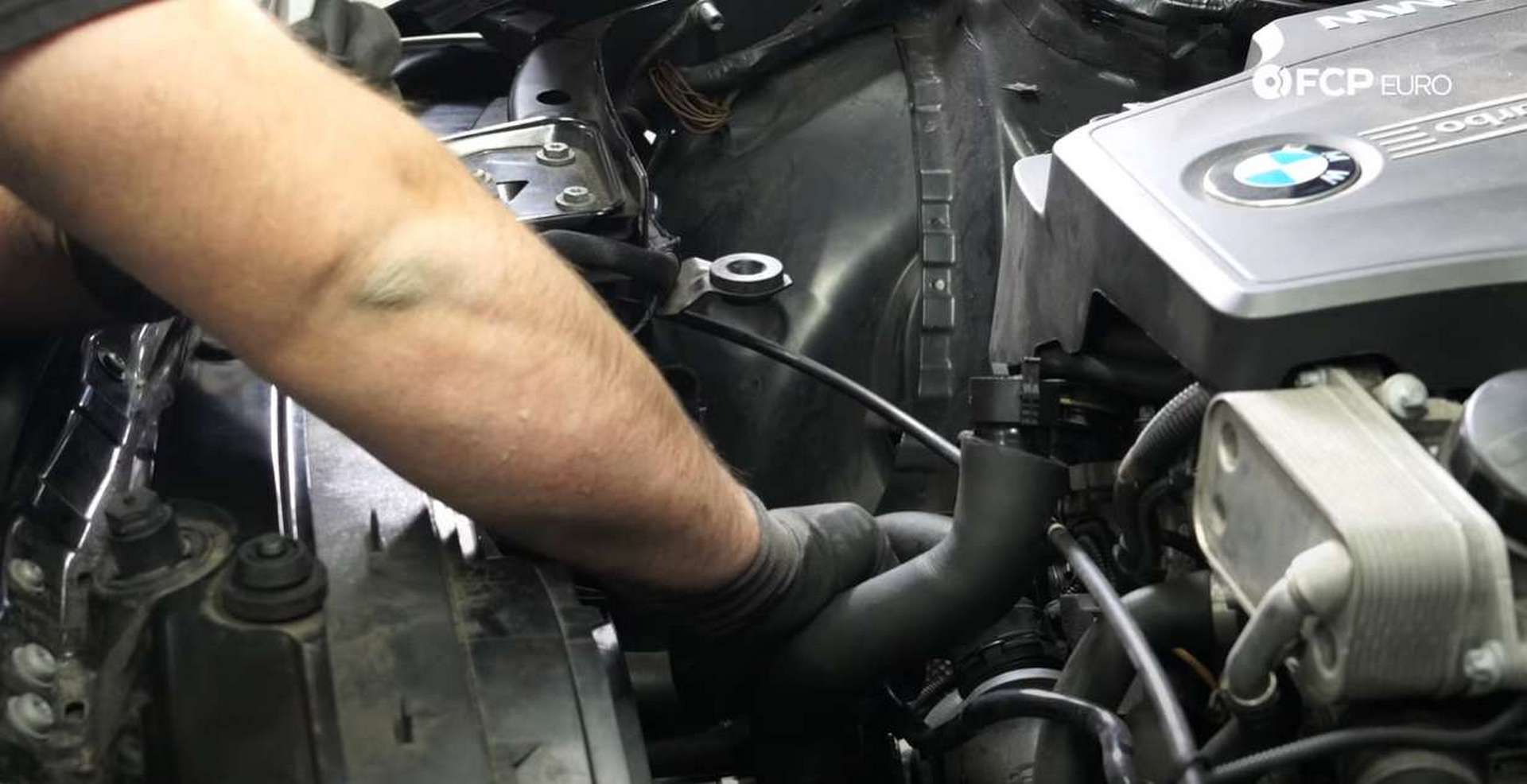
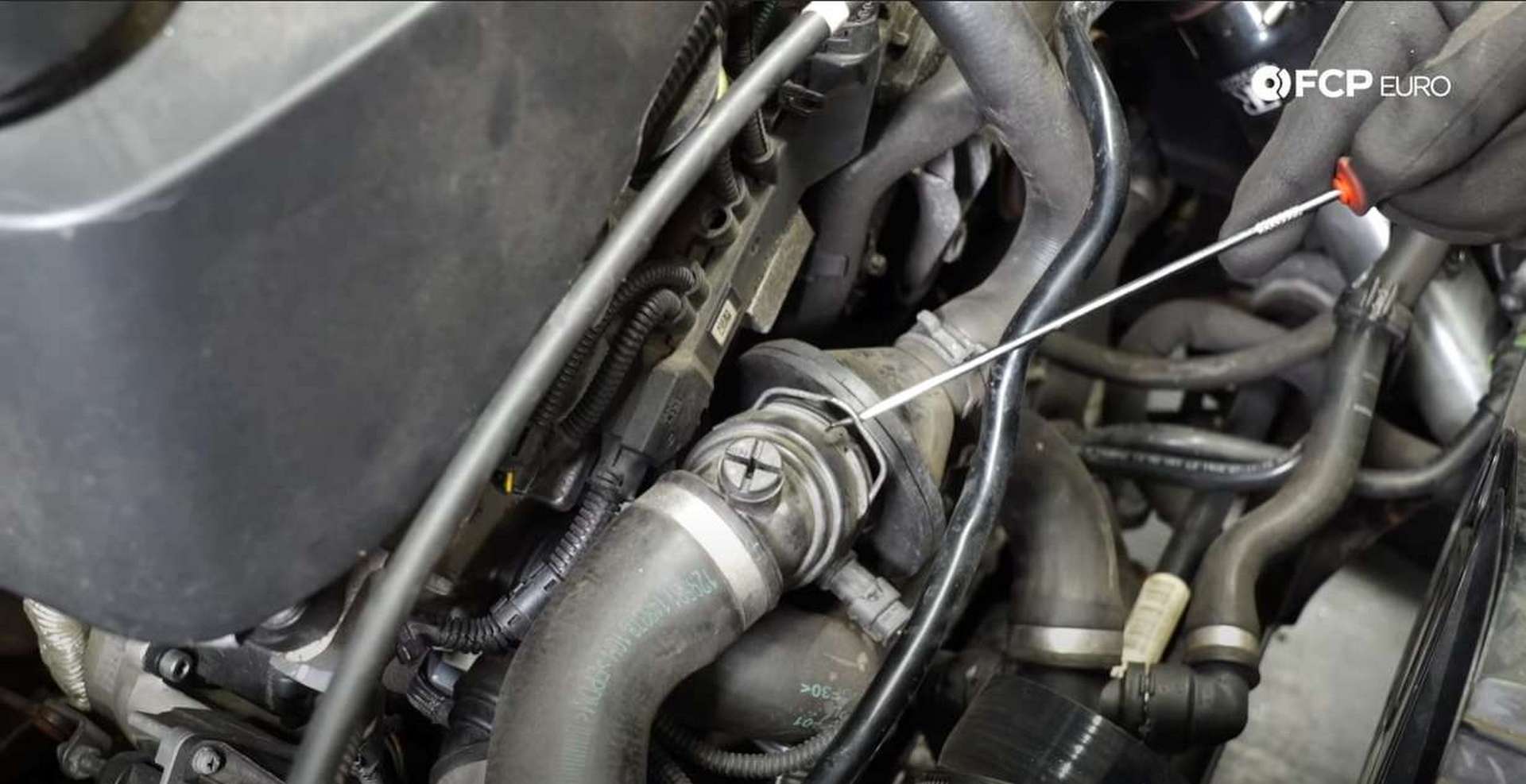
Next, use the hose clamp pliers to remove the hose clamps from the lower thermostat hoses. After you move the hose clamps back, pull the hoses off of the thermostat.

However, don't worry about removing the upper hose if you're replacing the upper coolant flange with the aluminum Rein flange. You can simply remove the flange from the cylinder head and remove the flange and thermostat together.

Use a T30 bit socket to remove the coolant flange's bolts. Wiggle the flange around to break the seal of the o-ring, and then pull the flange out of the head.
Head back to the thermostat and disconnect the wiring harness from the coolant temperature sensor. Then, remove the thermostat's two mounting bolts with a T30 bit socket.
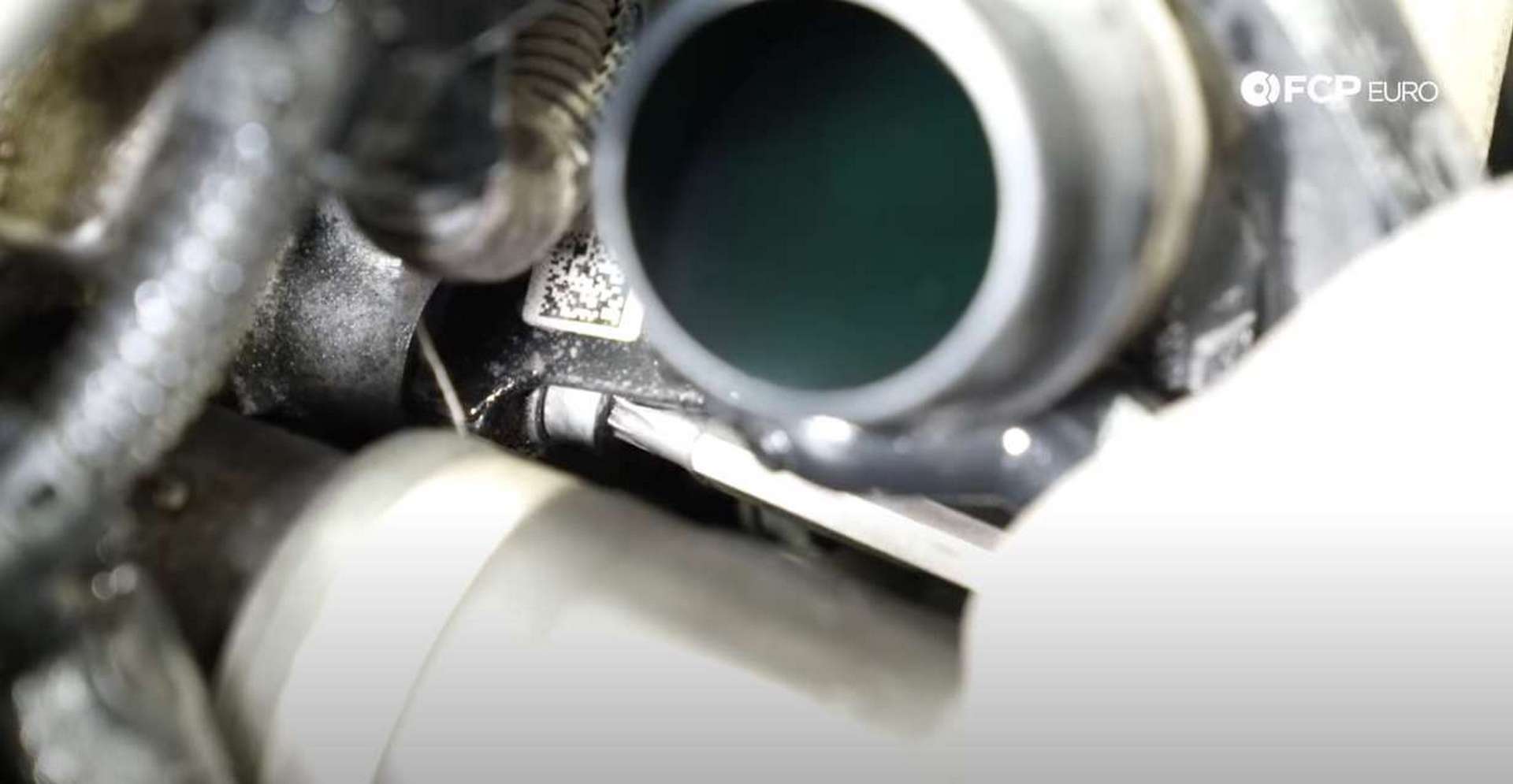
Step 4: Replace the water pump
Head under the car and locate the water pump under the engine. First, disconnect the harness from the pump. Then, use an E12 socket to remove the three bolts that mount the pump to the engine.
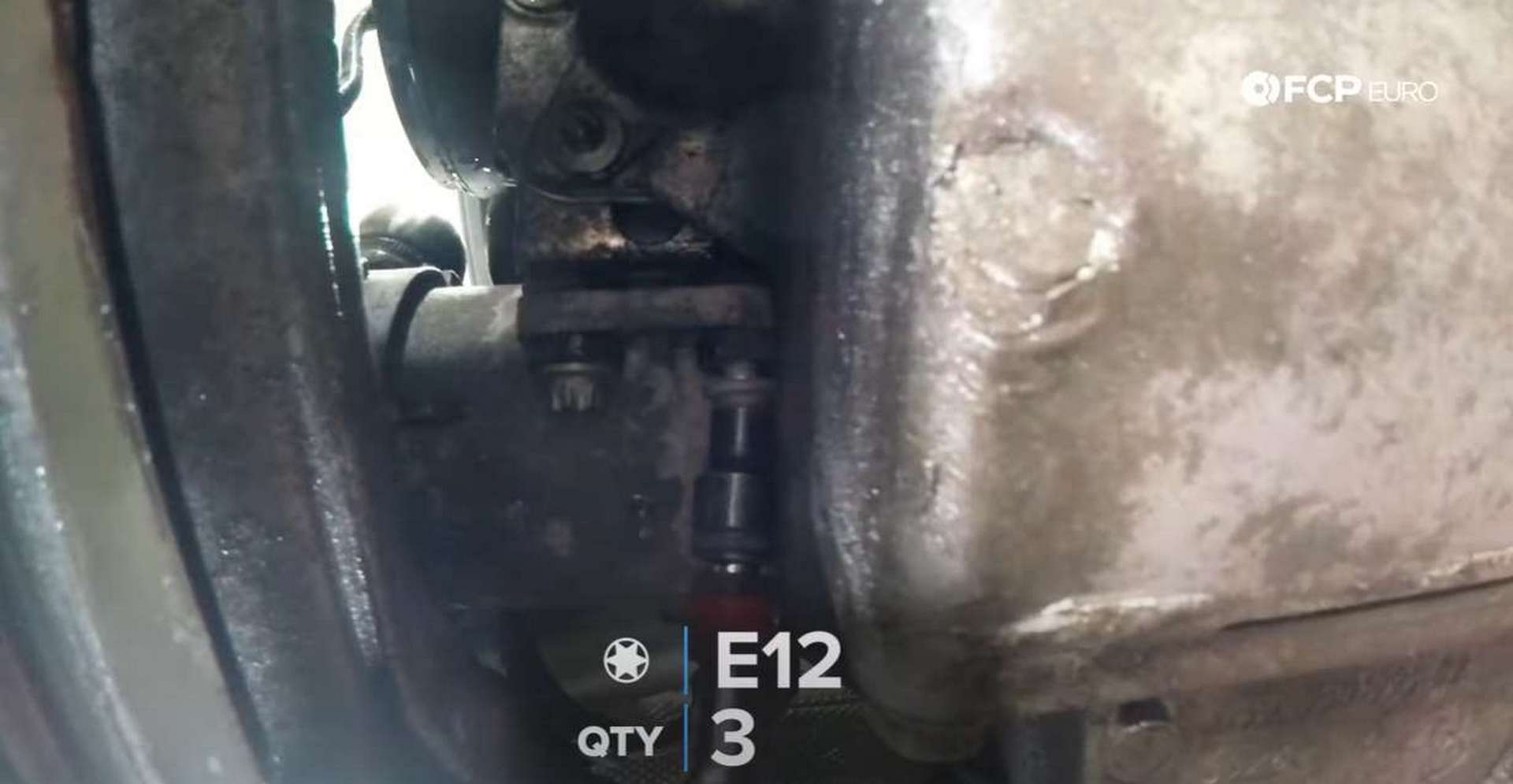

Two bolts mount to the underside of the engine while the third mounts above. Pull out the old water pump and install the new one. Thread in all three mounting bolts by hand to prevent cross-threading, and then use an E12 socket to drive them in.
Take the water pump's inlet and outlet hoses, and fit them onto the pump. Then secure the hoses to the pump with their respective hose clamps. Use a 6mm socket or nut drive to tighten the hose clamps.
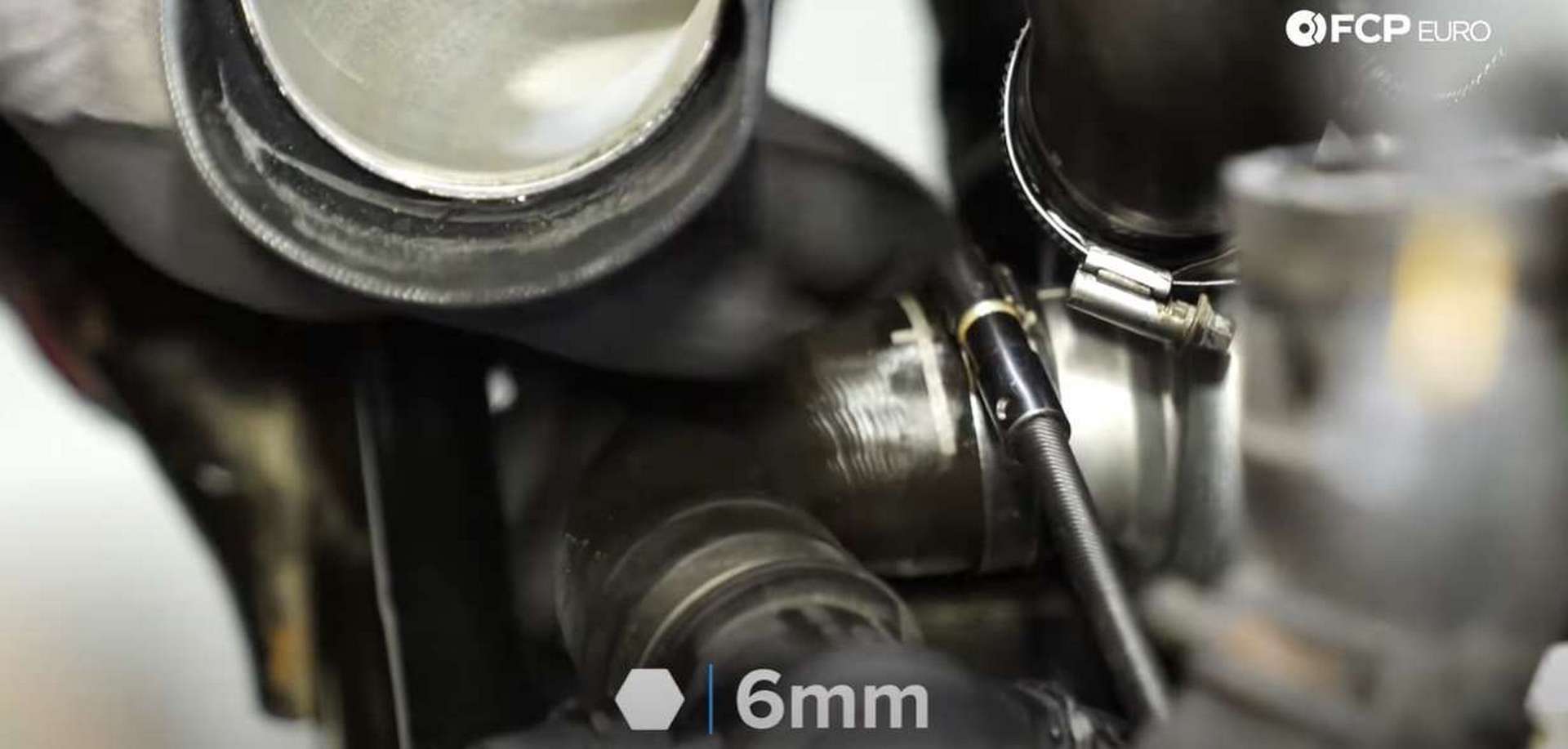
IMAGE-16 [DIY BMW N20 Water Pump and Thermostat Replacement tightening the water pump's hose clamp]
Step 5: Install the new thermostat
With the new water pump installed, fit the new thermostat into place. Get it into position and thread in its two mounting bolts by hand before using a T30 bit socket to tighten them down. Then, start refitting the hoses.

IMAGE-17 [DIY BMW N20 Water Pump and Thermostat Replacement fitting the hoses to the thermostat]
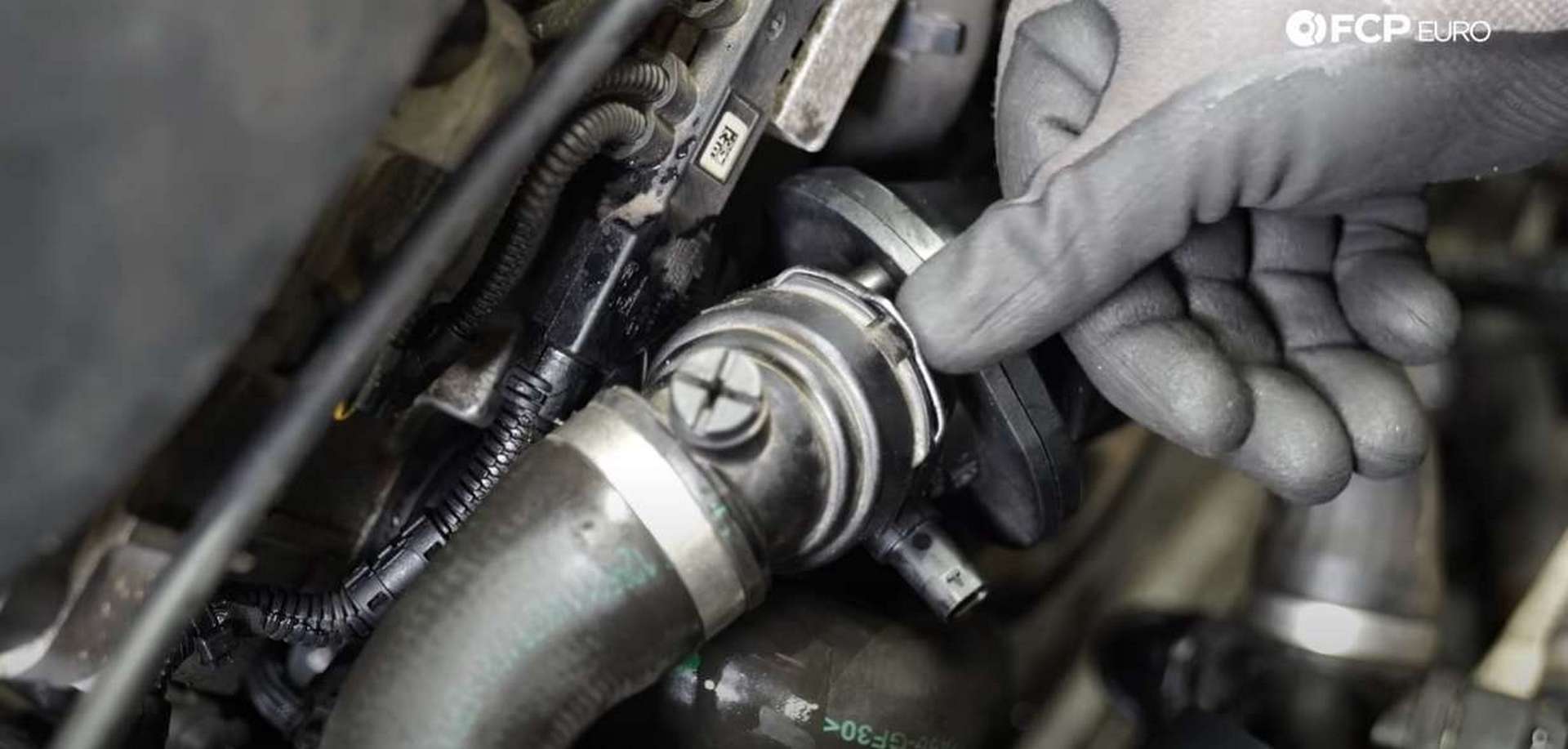
IMAGE-18 [DIY BMW N20 Water Pump and Thermostat Replacement fitting the hoses to the thermostat]
Lock the upper hose in with the metal lock and secure the lower hose with its hose clamp. Then reconnect the coolant temp sensor on the thermostat.
You need to break the hose clamp that secuers the upper thermostat hose to the plastic coolant flange. Remove the old flange and slide on a new hose clamp. Then, slip the hose over the Rein flange and install it on the cylinder head.

IMAGE-19 [DIY BMW N20 Water Pump and Thermostat Replacement fitting the upper hose and coolant flange]
Press the flange into the head and thread in its two mounting bolts by hand. Use a T30 bit socket to tighten the bolts. Slip the lower portion of the hose over the thermostat and secure it with its hose clamp.
Finally, refit the PCV hose to the engine. Clip in both ends of the hose and plug in the electrical connection.
Step 6: Refit the intake
First, refit the intake tube to the turbocharger, and use an 8mm socket or nut driver to tighten the hose clamp. Next, fit the airbox onto its rubber mounts.
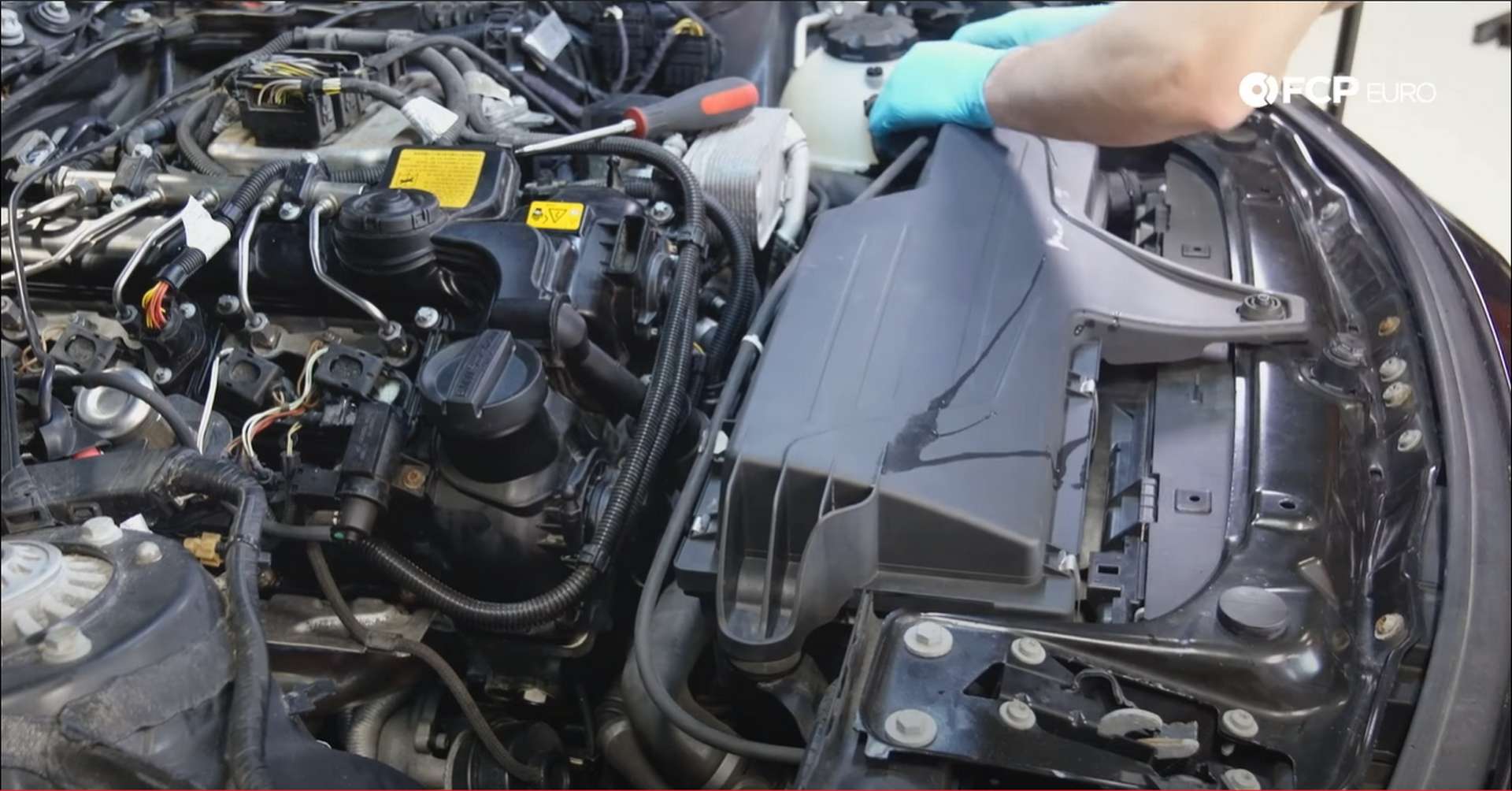
IMAGE-20 [DIY BMW N20 Water Pump and Thermostat Replacement refitting the airbox]
Then connect the intake pipe to the airbox and plug in the mass airflow sensor. Tighten down the intake pipe clamp with a flat-head screwdriver and fit the hood cable into the clips on the back of the airbox.
Step 7: Fill and bleed the cooling system
Now that everything's back together, fill and bleed the cooling system. If you purchased the BMW coolant linked above, it needs to be diluted. BMW recommends a 50/50 mix of coolant-to-water for warm climates and a 60/40 split for colder climates.
Pour the coolant mixture into the expansion tank until it reads full. Then, activate the car's self-bleeding process by turning it on and letting it run for a few minutes. After the bleeding process is over, check the coolant level in the expansion tank. Add the coolant mix as necessary to bring the level back to full.
Finally, with the coolant topped off, refit the splash shield and reinforcement plate to the bottom of the car. Use a 13mm socket for the reinforcement plate's bolts and an 8mm socket for the splash shield's fasteners.
Enjoy the next 60,000 miles of peace of mind knowing your water pump and thermostat are fresh and healthy. If you're interested in more DIYs for your BMW, you can visit bmw.fcpeuro.com and subscribe to our YouTube channel.











